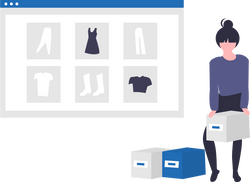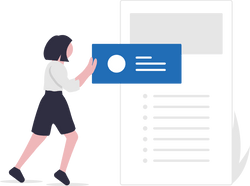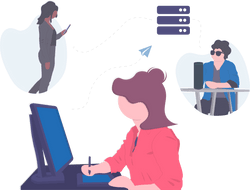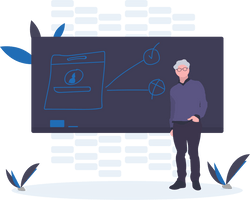Streamlining user access with single sign-on for global providers of on-premise solutions across various sectors utilized by diverse organizations.
Introduction
Our client is a premier global provider, specializing in risk management information systems (RMIS), enterprise risk management (ERM), and technology for insurance claims management, billing, and policy administration. Their offerings include advanced analytics and predictive models. Available in both SaaS and on-premise formats, with solutions that are trusted by insurers, brokers, corporate insureds, federal and regional governments, public entities, third-party claims administrators (TPAs), and risk pools. Catering to various industries such as transportation and logistics, retail, financial services, leisure and hospitality, energy, aviation, and manufacturing.
Objective
An initiative by our client, focuses on constructing a shared platform for users of Integrated Risk Management (IRM), Insurance Claims Management, and Decision Analytics products. The project aims to create a web application for key stakeholders to:
- Deliver a unified experience for users in Risk Management, Insurance Claims Management, and Decision Analytics.
- Implement SSO Integration with Keycloak to ensure secure user authentication, user federation, strong authentication, user management, fine-grained authorization, among other features.
Tekdi as the preferred Tech partner
Possessing expertise in web application development and a robust background in authentication and security, Tekdi has experience in integrating with enterprise systems and managing large datasets. Proficiency in UI/UX design, Agile development, and project management is essential, along with a proven track record demonstrated across case studies and references. Tekdi was the preferred Tech partner for the client leveraging innovative technologies for scalability, and aligning work ethics with them, ensuring effective communication and collaboration.
Our Approach
Understanding the Challenges
Failing to address the problem statement for the client can lead to fragmented user experiences, increased security risks, and inefficient user management. It can result in missed business opportunities, higher operational costs, and suboptimal analytics. The lack of a unified platform can cause user frustration and churn, reduced competitive edge, and compromised security due to multiple logins. Additionally, the absence of centralized user management and fine-grained authorization can lead to compliance issues and unauthorized access. Overall, not solving this problem hampers operational efficiency, user satisfaction, and business growth for the client.
Observations
The project was undertaken using the Waterfall model, facilitated by the MS Project Management tool. In this approach, each phase of the project is completed sequentially, with a focus on careful planning and documentation before proceeding to the next stage.
Solution and Execution
Strategies:
- Product-Centric Approach: To efficiently manage the diverse product lines, separate tracks were created for each product. This allowed for a more focused and streamlined approach to development and implementation.
- Thorough Discovery and Analysis: Recognizing the complexity of user management processes across different products, the project team allocated sufficient time for discovery and analysis. This phase was crucial for the Tekdi team to gain a comprehensive understanding of the unique requirements and challenges associated with each product.
- Regular Communication and Reporting: Regular status meetings were conducted to ensure transparency and alignment throughout the project, supplemented by weekly status reports. These communication channels provided stakeholders with updates on progress, issues, and next steps.
- Structured Approval Process: Each phase of the project underwent a thorough sign-off process. This ensured that deliverables met the specified requirements and quality standards before progressing to the next stage of development.
Tools:
- Project Management System (PMS): Utilized for task planning and effort logging, facilitating organized project execution.
- MS Smartsheet: Employed for project planning, providing a comprehensive overview of project timelines and milestones.
- Jira: Implemented for UAT bug tracking, enabling efficient identification and resolution of issues during user acceptance testing.
Technologies Used:
- Web Frontend: Developed using ReactJS, ensuring a responsive and user-friendly interface.
- Middleware: Built as a single service on NodeJS, facilitating seamless communication between frontend and backend components.
- Content Store: Powered by Strapi, a Headless CMS, for efficient storage and management of various content types.
- Authentication: Implemented Keycloak for robust authentication, ensuring secure user access.
- Database: Initially evaluated Keycloak with Oracle DB for scalability, with a backup plan to set up PostgreSQL in highly available mode if needed.
- Services Deployment: Leveraged Kubernetes cluster for efficient deployment and scaling of services.
Solution:
- Authentication and User Sync with Keycloak: Implemented user authentication and synchronization with Keycloak, ensuring secure access across all products.
- Realms for Multi-Tenancy: Utilized Keycloak realms to achieve multi-tenancy, with each realm representing a distinct customer, enhancing security and customization.
- SAML-Based Integration: Implemented SAML-based integration for Risk Management (IRM), Insurance Claims Management & Decision Analytics products, ensuring seamless interaction and data exchange.
- Content Management with Strapi: Leveraged Strapi for storing and managing diverse content types such as documents, PDFs, and blogs, providing a centralized and flexible content management solution.
By adopting these strategies and leveraging appropriate tools and technologies, the project was executed efficiently, ensuring seamless authentication, integration, and content management capabilities across all product lines. The allocation of skilled resources further enhanced the project's success and delivery quality.
Successes -
The project achieved significant milestones and contributed to the success in several key areas:
- Business Objective Attainment: The client effectively addressed the initial problem statement by providing a unified platform experience for users across their product lines, fulfilling the goal of enhancing operational efficiency and user satisfaction.
- Improved User Experience: Client's intuitive interface and seamless integration significantly improved the overall user experience. Users reported increased productivity and satisfaction due to the platform's cohesive design and streamlined workflows.
- Enhanced Security: The successful implementation of Keycloak for authentication and user management bolstered security standards. Ensuring robust protection of sensitive data, mitigating the risk of unauthorized access and data breaches.
- Scalability and Flexibility: The architecture, including its deployment on Kubernetes and evaluation of database options, ensured scalability to meet growing demands and flexibility to adapt to evolving business needs, ensuring future-proofing of the platform.
- Customization: The utilization of Keycloak realms enabled multi-tenancy, allowing for tailored experiences for different customers while maintaining stringent security measures and data isolation, enhancing customization capabilities.
Impact -
Impacts Created
- Operational Efficiency: The client’s unified platform streamlined processes across their product lines, reducing duplication of effort and simplifying workflows. This operational efficiency translated into cost savings and improved resource allocation for the organization.
- Competitive Advantage: By offering a seamless and integrated solution, The client positioned their organization as a leader in the market. The platform's ability to meet diverse user needs and enhance productivity gave it a competitive edge over competitors with fragmented offerings.
- Compliance and Risk Management: Robust security features, including Keycloak authentication and user management, helped the organization mitigate compliance risks and safeguard sensitive data. This ensured adherence to regulatory requirements and protected their reputation.
Impacts Enabled
Enterprises can now experience productivity due to the platform’s cohesive design and streamlined workflows. The platform's intuitive interface and centralized access to information allow enterprises to accomplish tasks more efficiently, saving time and effort.








